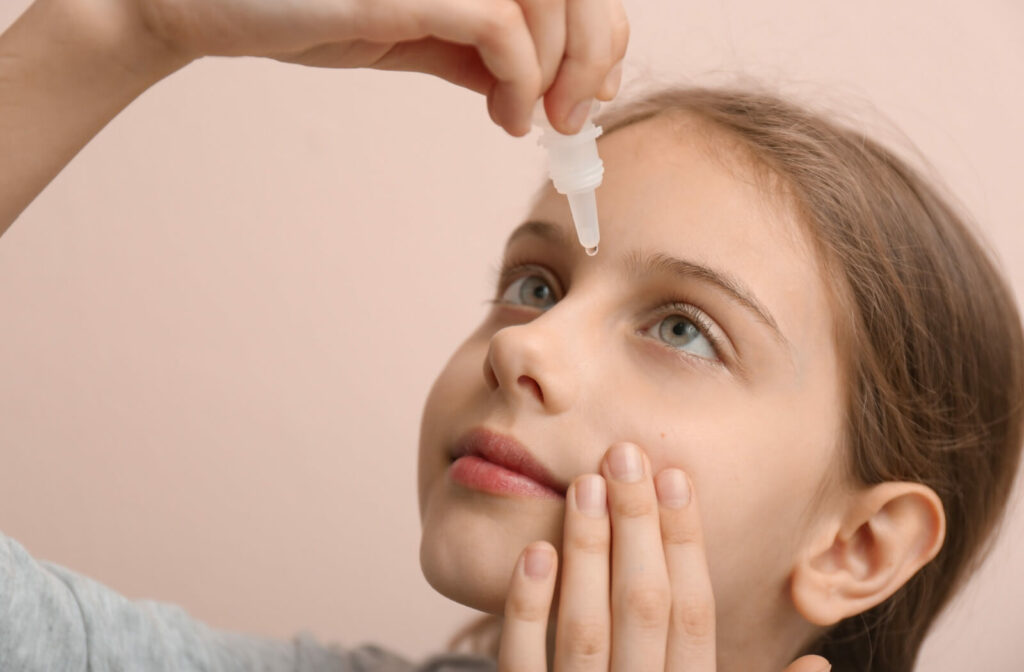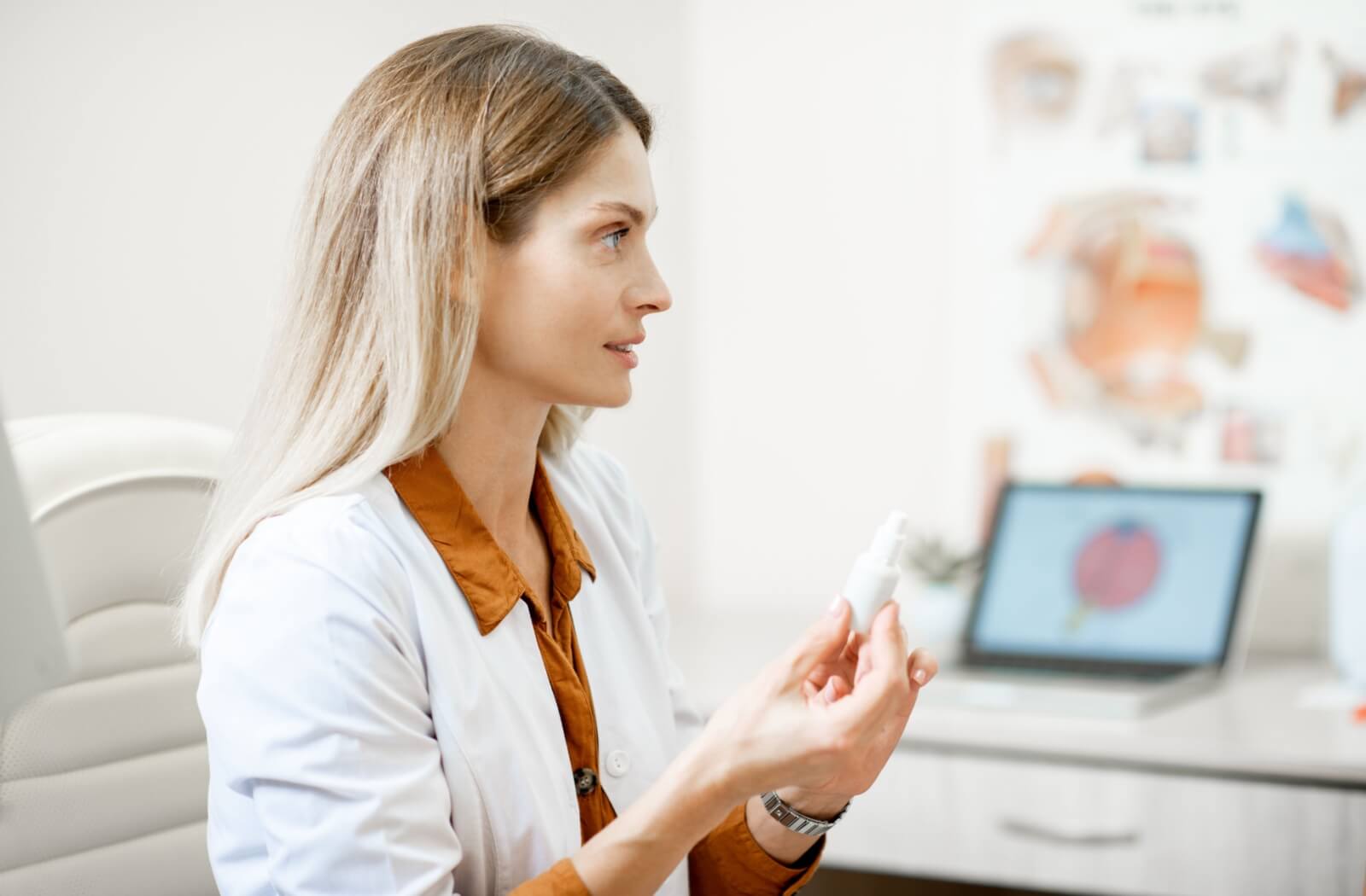Myopia, or nearsightedness, is more common than ever. If your child is living with myopia, you’ve likely wondered what solutions exist. Myopia control is a fantastic way to help manage your child’s nearsightedness, and one option for treatment is simple: atropine eye drops.
Atropine eye drops are used to relax your child’s eye muscles. This helps slow myopia progression and preserves more of their vision over time. When used alongside other types of myopia management options, atropine eye drops can be a safe and effective approach to protecting your child’s future vision!
What Is Myopia?
Myopia is a common vision issue that affects how the eye develops. It develops when the eye grows too long or the cornea develops incorrectly. This changes how light focuses inside the eye and leads to blurry vision when focusing on something at a distance.
This can be progressive condition. Myopia usually starts in childhood and worsens throughout the teenage years. Typically, the eye reaches full development in early adulthood and vision stabilizes.
However, myopia isn’t just about inconvenience and poor vision. As it affects the physical shape of the eye, it increases the future risk of conditions like glaucoma and retinal damage. Early detection is key to managing myopia and protecting your child’s future vision.
How to Tell If a Child Is Nearsighted
Spotting signs of nearsightedness early makes a big difference. Your child may not know they’re dealing with poor vision or might not understand what’s occurring with their sight. As a parent, it helps to know what to watch out for.
Some signs of nearsightedness in children include:
- Squinting frequently to see something at a distance.
- Holding books, tablets, or other objects very close to their face.
- Sitting too close to the TV or computer screen.
- Complaining about headaches or eye strain after reading or watching something.
- Having difficulty seeing the board at school or reading distant signs.
If you’ve noticed these issues, it’s time to schedule an eye exam. Your optometrist can pinpoint whether myopia is the issue and discuss your treatment options—like myopia management.
What Is Myopia Control?
Myopia control is a safe, non-invasive, and extremely effective approach to help manage the progression of myopia in children by using different strategies and treatments to slow how long your child’s eyes grow, which can preserve more of your child’s future vision.
There are several approaches to myopia control. Treatments options may include one or more of the following:
- Making lifestyle changes like reducing time spent indoors on screens. Children who regularly spend more than 2 hours outside usually have stronger distance vision.
- Orthokeratology, or ortho-k. This involves wearing special rigid contact lenses overnight to temporarily reshape the cornea and provide clear vision during the day.
- Special contact or eyeglass lenses. These have different zones built into each lens that slow how far the eye grows over time.
Your first step towards managing your child’s myopia is through a visit with your optometrist. They’ll work closely with you to create a treatment plan that works for your child. As combination therapy has been shown to have great results, it is likely that your optometrists’ recommended treatment plan will include Atropine eye drops.
How Eye Drops Help Myopia
Atropine eye drops are a simple approach to myopia control. When used alongside other methods, these are extremely effective. These include a diluted concentration of Atropine, a chemical that relaxes certain muscles in the eye.
Atropine is usually applied during eye exams as it makes your pupils allow more light in. In myopia control, atropine is used to slow the eye’s growth and prevent elongation. When used regularly during myopia control treatments, atropine drops can decrease myopia growth by roughly 30%.

Atropine drops are safe to use, even for younger children. They’re proven to be effective over time without causing harm or serious side effects. This makes it an excellent addition to a myopia control treatment plan.
Tips For Helping a Child Use Eye Drops
Using eye drops can feel intimidating for some children, but it’s easy to help! Staying calm and creating a positive, worry-free atmosphere makes a significant difference.
Here are some helpful tips to make applying eye drops simpler:
- Wash your hands to ensure the process is hygienic.
- Have your child recline comfortably or tilt their head back.
- Use a drop dispenser for more precise application.
- Approach slowly and explain each step as you go.
- Offer praise or a small reward once the drops are in.
Routine is also key. Try to apply the drops at the same time every day to keep things consistent. If you’re not sure how to help, ask your optometrist for tailored advice during your next visit.
Does Your Child Have Myopia?
Nearsightedness is frustrating, but there’s no need for your child to suffer in silence. Our team at Vivid Eye Care is here to help. Whether it’s through eyeglasses, contacts, atropine eye drops, or any other myopia management technique, our team is here to keep your child’s vision clear. Book an appointment with us today, and let’s work together to protect your child’s sight!






















